Aqsa Saeed Qureshi
Transfer Learning with Ensembles of Deep Neural Networks for Skin Cancer Classification in Imbalanced Data Sets
Mar 30, 2021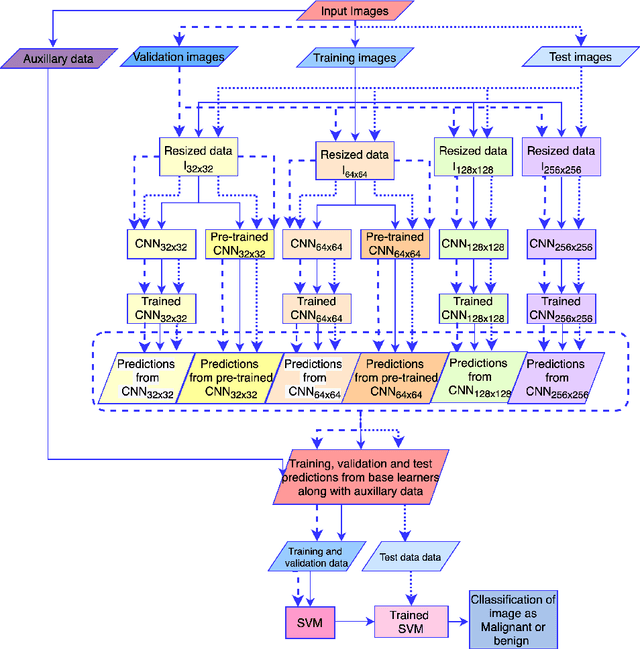
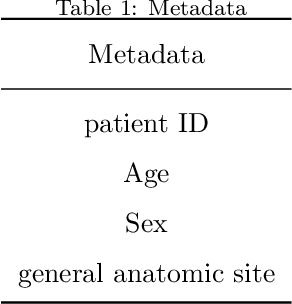
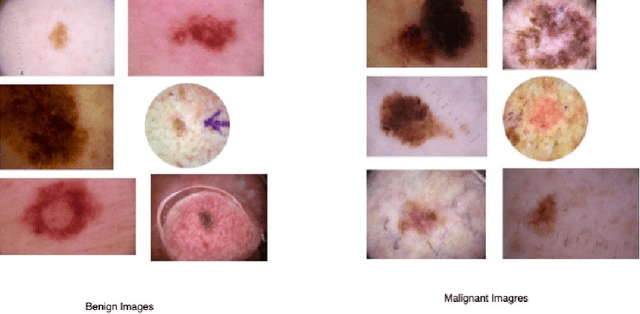
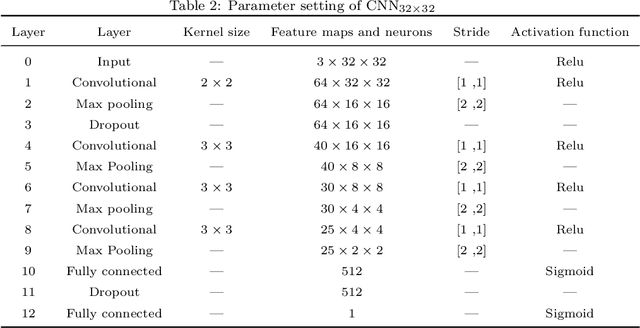
Abstract:Early diagnosis plays a key role in prevention and treatment of skin cancer.Several machine learning techniques for accurate classification of skin cancer from medical images have been reported. Many of these techniques are based on pre-trained convolutional neural networks (CNNs), which enable training the models based on limited amounts of training data. However, the classification accuracy of these models still tends to be severely limited by the scarcity of representative images from malignant tumours. We propose a novel ensemble-based CNN architecture where multiple CNN models, some of which are pre-trained and some are trained only on the data at hand, along with patient information (meta-data) are combined using a meta-learner. The proposed approach improves the model's ability to handle scarce, imbalanced data. We demonstrate the benefits of the proposed technique using a dataset with 33126 dermoscopic images from 2000 patients.We evaluate the performance of the proposed technique in terms of the F1-measure, area under the ROC curve (AUC-ROC), and area under the PR curve (AUC-PR), and compare it with that of seven different benchmark methods, including two recent CNN-based techniques. The proposed technique achieves superior performance in terms of all the evaluation metrics (F1-measure $0.53$, AUC-PR $0.58$, AUC-ROC $0.97$).
Extracting Signals of Higgs Boson From Background Noise Using Deep Neural Networks
Oct 16, 2020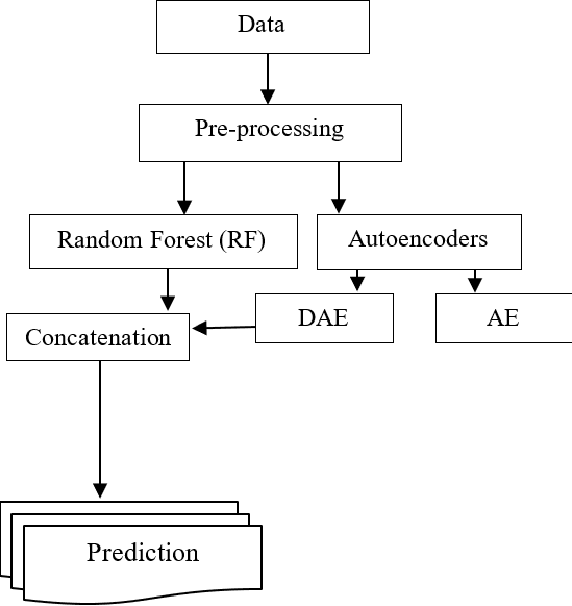

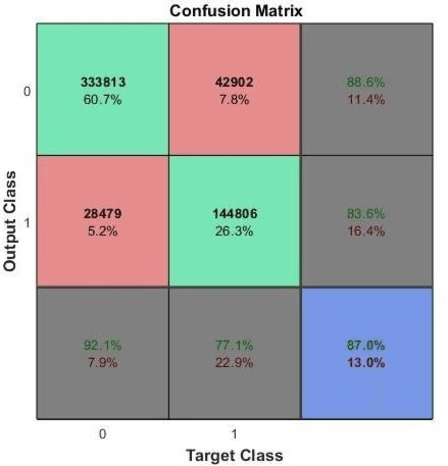
Abstract:Higgs boson is a fundamental particle, and the classification of Higgs signals is a well-known problem in high energy physics. The identification of the Higgs signal is a challenging task because its signal has a resemblance to the background signals. This study proposes a Higgs signal classification using a novel combination of random forest, auto encoder and deep auto encoder to build a robust and generalized Higgs boson prediction system to discriminate the Higgs signal from the background noise. The proposed ensemble technique is based on achieving diversity in the decision space, and the results show good discrimination power on the private leaderboard; achieving an area under the Receiver Operating Characteristic curve of 0.9 and an Approximate Median Significance score of 3.429.
Wind Speed Prediction using Deep Ensemble Learning with a Jet-like Architecture
Mar 20, 2020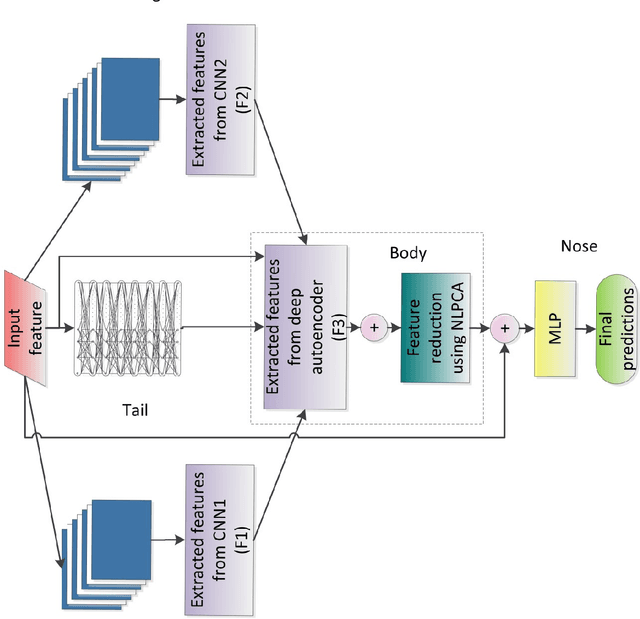

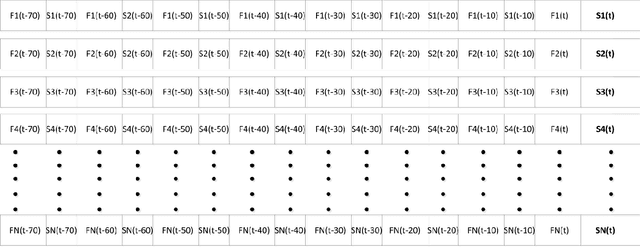
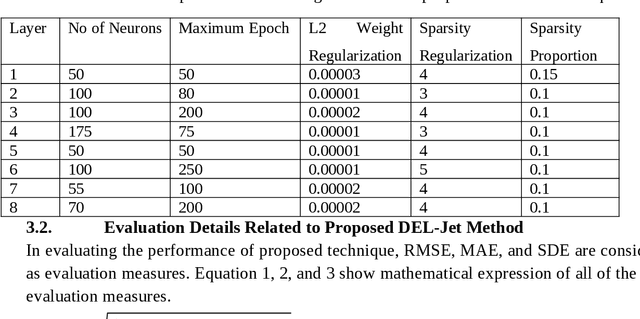
Abstract:The wind is one of the most increasingly used renewable energy resources. Accurate and reliable forecast of wind speed is necessary for efficient power production; however, it is not an easy task because it depends upon meteorological features of the surrounding region. Deep learning is extensively used these days for performing feature extraction. It has also been observed that the integration of several learning models, known as ensemble learning, generally gives better performance compared to a single model. The design of wings, tail, and nose of a jet improves the aerodynamics resulting in a smooth and controlled flight of the jet against the variations of the air currents. Inspired by the shape and working of a jet, a novel Deep Ensemble Learning using Jet-like Architecture (DEL-Jet) technique is proposed to enhance the diversity and robustness of a learning system against the variations in the input space. The diverse feature spaces of the base-regressors are exploited using the jet-like ensemble architecture. Two Convolutional Neural Networks (as jet wings) and one deep Auto-Encoder (as jet tail) are used to extract the diverse feature spaces from the input data. After that, nonlinear PCA (as jet main body) is employed to reduce the dimensionality of extracted feature space. Finally, both the reduced and the original feature spaces are exploited to train the meta-regressor (as jet nose) for forecasting the wind speed. The performance of the proposed DEL-Jet technique is evaluated for ten independent runs and shows that the deep and jet-like architecture helps in improving the robustness and generalization of the learning system.
Malware Classification using Deep Learning based Feature Extraction and Wrapper based Feature Selection Technique
Nov 26, 2019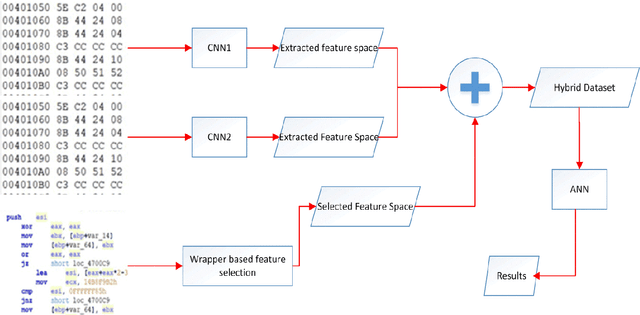
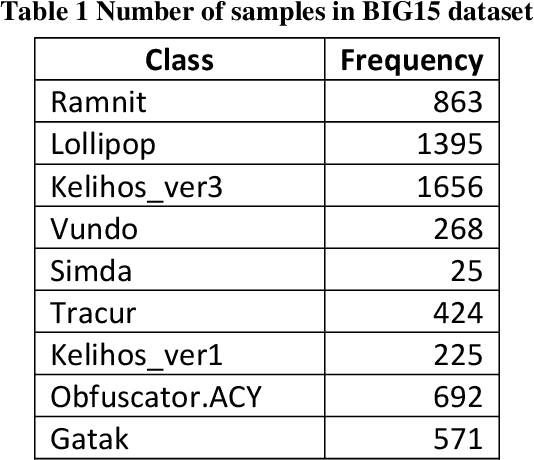
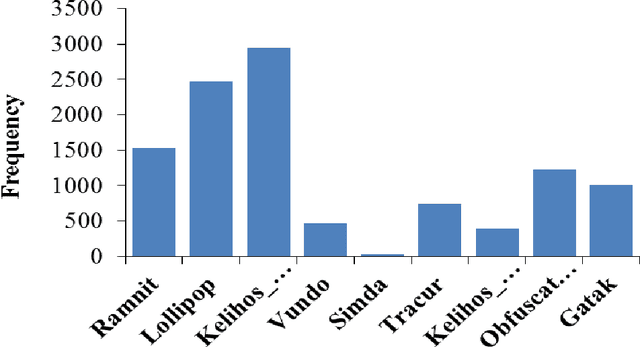
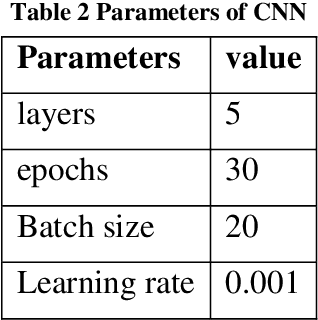
Abstract:In case of behavior analysis of a malware, categorization of malicious files is an essential part after malware detection. Numerous static and dynamic techniques have been reported so far for categorizing malwares. This research work presents a deep learning based malware detection (DLMD) technique based on static methods for classifying different malware families. The proposed DLMD technique uses both the byte and ASM files for feature engineering and thus classifying malwares families. First, features are extracted from byte files using two different types of Deep Convolutional Neural Networks (CNN). After that, important and discriminative opcode features are selected using a wrapper-based mechanism, where Support Vector Machine (SVM) is used as a classifier. The idea is to construct a hybrid feature space by combining the different feature spaces in order that the shortcoming of a particular feature space may be overcome by another feature space. And consequently to reduce the chances of missing a malware. Finally, the hybrid feature space is then used to train a Multilayer Perceptron, which classifies all the nine different malware families. Experimental results show that proposed DLMD technique achieves log-loss of 0.09 for ten independent runs. Moreover, the performance of the proposed DLMD technique is compared against different classifiers and shows its effectiveness in categorizing malwares. The relevant code and database can be found at https://github.com/cyberhunters/Malware-Detection-Using-Machine-Learning.
A Recent Survey on the Applications of Genetic Programming in Image Processing
Jan 18, 2019
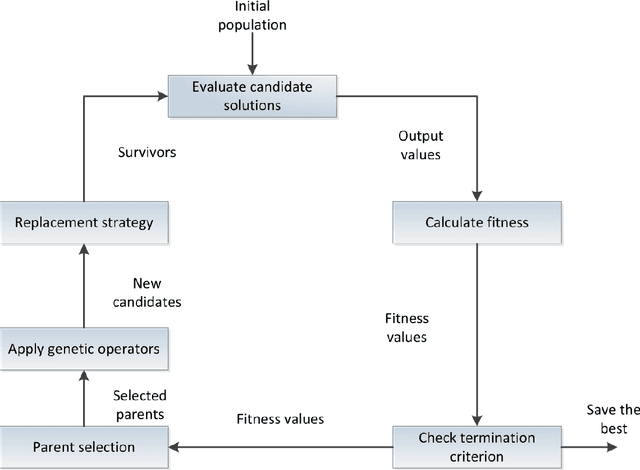
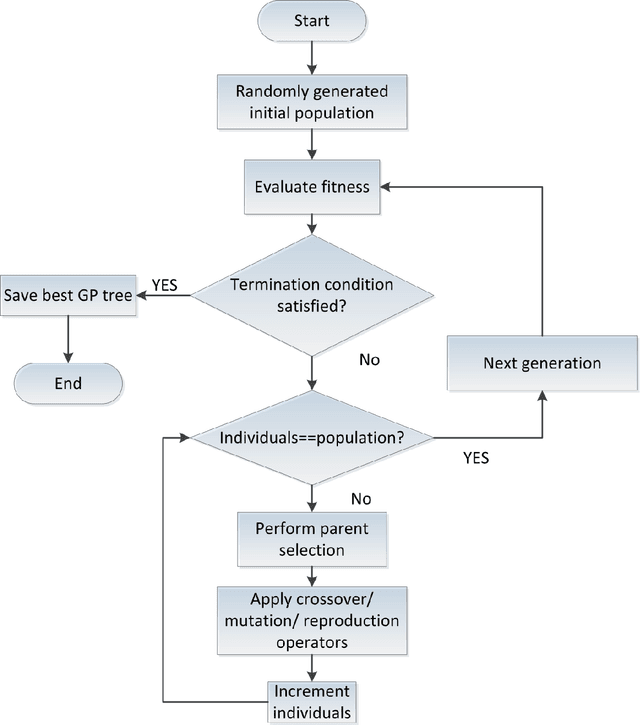
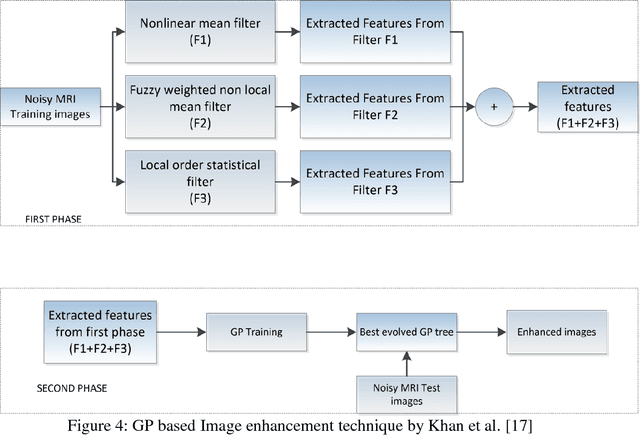
Abstract:During the last two decades, Genetic Programming (GP) has been largely used to tackle optimization, classification, and automatic features selection related tasks. The widespread use of GP is mainly due to its flexible and comprehensible tree-type structure. Similarly, research is also gaining momentum in the field of Image Processing (IP) because of its promising results over wide areas of applications ranging from medical IP to multispectral imaging. IP is mainly involved in applications such as computer vision, pattern recognition, image compression, storage and transmission, and medical diagnostics. This prevailing nature of images and their associated algorithm i.e complexities gave an impetus to the exploration of GP. GP has thus been used in different ways for IP since its inception. Many interesting GP techniques have been developed and employed in the field of IP. To give the research community an extensive view of these techniques, this paper presents the diverse applications of GP in IP and provides useful resources for further research. Also, comparison of different parameters used in ten different applications of IP are summarized in tabular form. Moreover, analysis of different parameters used in IP related tasks is carried-out to save the time needed in future for evaluating the parameters of GP. As more advancement is made in GP methodologies, its success in solving complex tasks not only related to IP but also in other fields will increase. Additionally, guidelines are provided for applying GP in IP related tasks, pros and cons of GP techniques are discussed, and some future directions are also set.
A Survey of the Recent Architectures of Deep Convolutional Neural Networks
Jan 17, 2019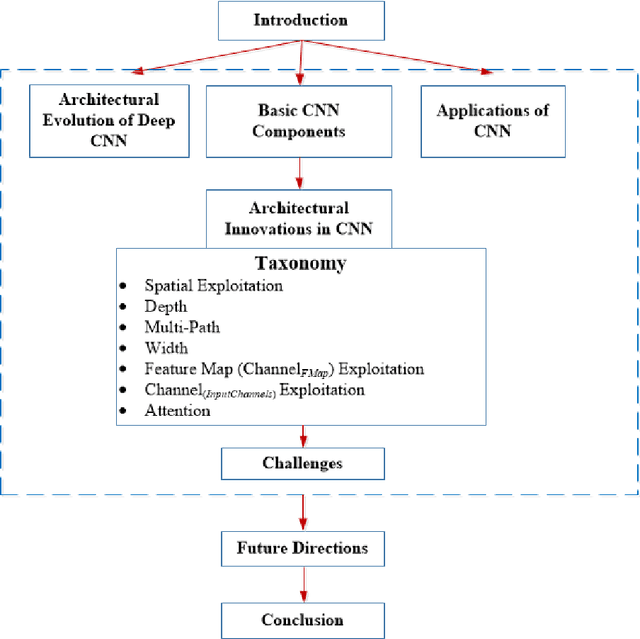
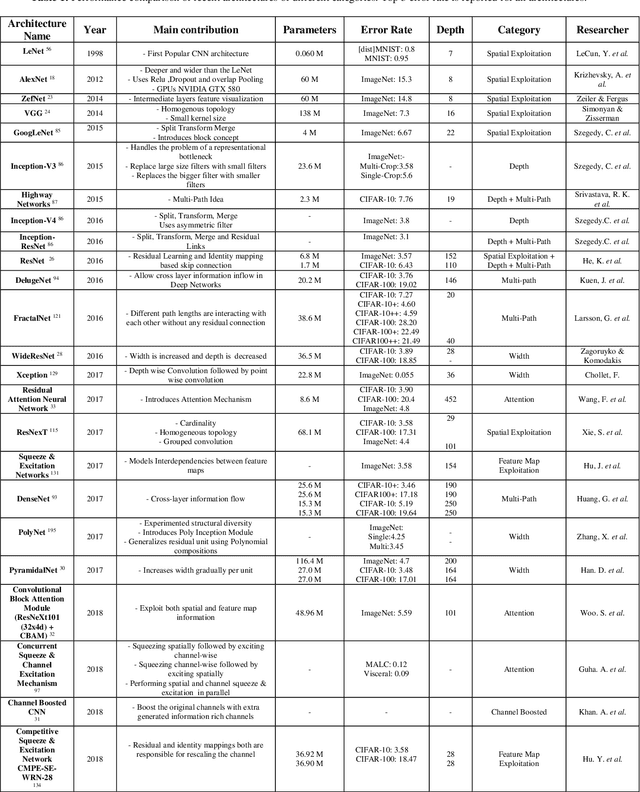
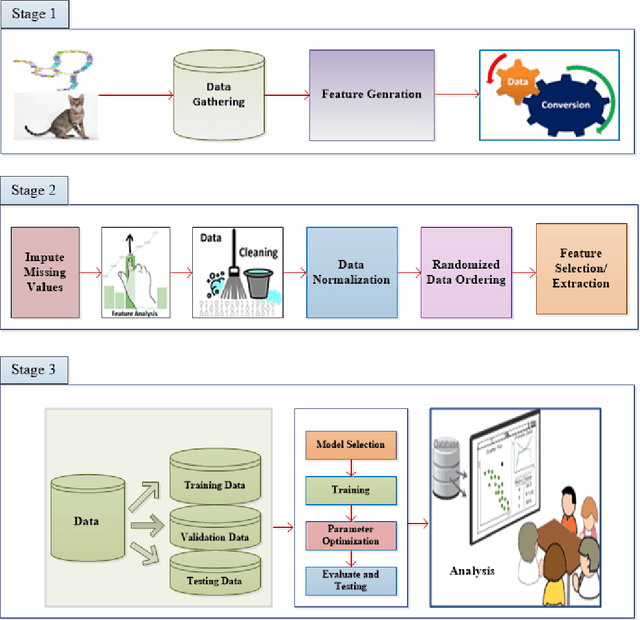
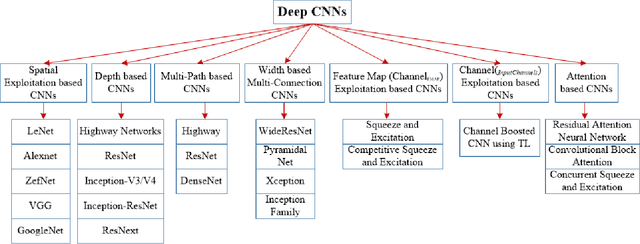
Abstract:Deep Convolutional Neural Networks (CNNs) are a special type of Neural Networks, which have shown state-of-the-art results on various competitive benchmarks. The powerful learning ability of deep CNN is largely achieved with the use of multiple non-linear feature extraction stages that can automatically learn hierarchical representation from the data. Availability of a large amount of data and improvements in the hardware processing units have accelerated the research in CNNs and recently very interesting deep CNN architectures are reported. The recent race in deep CNN architectures for achieving high performance on the challenging benchmarks has shown that the innovative architectural ideas, as well as parameter optimization, can improve the CNN performance on various vision-related tasks. In this regard, different ideas in the CNN design have been explored such as use of different activation and loss functions, parameter optimization, regularization, and restructuring of processing units. However, the major improvement in representational capacity is achieved by the restructuring of the processing units. Especially, the idea of using a block as a structural unit instead of a layer is gaining substantial appreciation. This survey thus focuses on the intrinsic taxonomy present in the recently reported CNN architectures and consequently, classifies the recent innovations in CNN architectures into seven different categories. These seven categories are based on spatial exploitation, depth, multi-path, width, feature map exploitation, channel boosting and attention. Additionally, it covers the elementary understanding of the CNN components and sheds light on the current challenges and applications of CNNs.
Adaptive Transfer Learning in Deep Neural Networks: Wind Power Prediction using Knowledge Transfer from Region to Region and Between Different Task Domains
Oct 30, 2018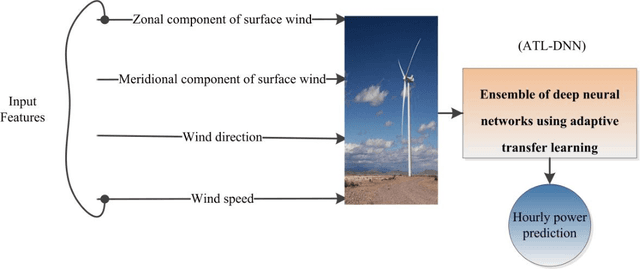

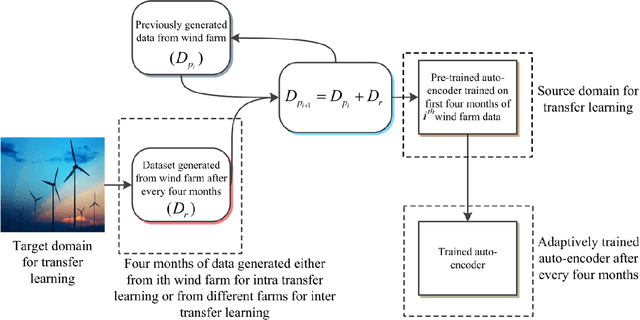

Abstract:Transfer Learning (TL) in Deep Neural Networks is gaining importance because in most of the cases, the labeling of data is costly and time-consuming. Additionally, TL provides effective weight initialization. This paper introduces the idea of Adaptive Transfer Learning in Deep Neural Networks for wind power prediction. Adaptive TL of Deep Neural Networks is proposed, which makes the proposed system an adaptive one as regards training on a different wind farm is concerned. The proposed technique is tested for short-term wind power predictions, where continuously arriving information has to be exploited. Adaptive TL not only helps in providing good weight initialization, but is also helpful to utilize the online data that is continuously being generated by wind farms. Additionally, the proposed technique is shown to transfer knowledge between different task domains (wind power to wind speed prediction) and from one region to another region. The simulation results show that proposed technique achieves average values of 0.0637,0.0986, and 0.0984 for the Mean-Absolute-Error, Root-Mean-Squared-Error, and Standard-Deviation-Error, respectively.
 Add to Chrome
Add to Chrome Add to Firefox
Add to Firefox Add to Edge
Add to Edge